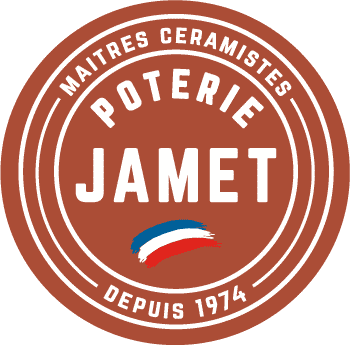Flow rate and porosity factor of the Ollas
The porosity of the olla will depend on its flow rate.
must be taken to select a clay ollas with a sufficient flow rate to cover the needs of the plant in the given climatic conditions.
But this rate is not a fixed datum, as is the case for other irrigation systems. It is difficult to predict and will depend, among other things, on the Evapotranspiration rate of the area to be irrigated (heading above) and the following factors:
- Self-regulation of the jar according to the double pressure of the hydraulic conductivity, inside and outside the jar.
- Hydraulic conductivity of the jar.
- Consequences of the choice of materials and manufacturing methods.
Ollas self-regulation
The hydraulic conductivity acts according to a double pressure:
- Water pressure inside the jar, exerted by the height of water and the volume of the jar.
- Pressure from the environment outside the jar, exerted according to the rate of humidity and evapotranspiration of the soil, associated with the needs of the plants according to their nature and the climate.
We recommend a volume greater than:
- > 5 Liters for vegetable mounds and shrubs.
- > 10 Liters for arboreal crops.
- > 20 Liters or more for specific trees and beds depending on the technical constraints (climate, soil, species, access, desired autonomy, etc.).
In the case of a buried jar, the external pressure will be the suction exerted by the ground. (*)
(*) “Suction, plant physiology” [archive], on www.universalis.fr
A very dry soil or air, outside the jar, will exert a suction pressure causing the water to flow through the walls out of the jar, making it adapt to the external conditions.
As the moisture content of the soil decreases, the suction tension of the soil increases. Soil moisture decreases due to evapotranspiration and the uptake of water by the roots.
When a soil is very dry, the suction tension is strong and increases the rate of flow from the jar.
Conversely, in saturated soil, the suction tension is zero and the flow will stop.
If the jar is empty, then the balance between the different pressures is reversed and the jar will fill (flow process from outside to inside).
Independently of the internal and external pressure, the jar adapts the speed of its flow according to the needs of the plant.
The plant draws water from the soil through its roots to meet its needs, depending on evapotranspiration.
The jar therefore causes the humidity level of the soil to change, and thus progressively affects the flow rate.
The suction process itself causes pressure, which is all the stronger the closer the roots are to the walls of the jar.
The roots being able to detect the humidity, they move towards the latter and after some time, the walls of the jar are found covered with roots coming to draw the water directly from the source (in particular for the plants with the system important root such as tomatoes). (*)
(*) AE Daka, Chapter 7 Clay pot sub-surface irrigation as water-saving technology for small-farmer irrigation in Development of a technological package for sustainable use of Dambos by small-scale farmers, PhD Thesis,, Pretoria, South Africa, University of Pretoria, 2001
Thus, a jar does not behave in the same way in the atmosphere and once buried, it adapts to the conditions of its environment and to the needs of the plants.
Ollas Hydraulic Conductivity
Hydraulic conductivity is the ability of a porous medium to let a fluid pass under the effect of a pressure variation rate. It is usually expressed in meters per second (m/s).
It is a quantity depending both on the properties of the porous medium where the flow takes place, on the properties of the flowing fluid (here, water) and on the degree of saturation of the porous medium. To simplify the measurements, it is generally chosen to measure the hydraulic conductivity at saturation.
We are interested here in the properties of the porous medium, namely the walls of the jar.
The choice of materials, the preparation of the dough to be shaped, the drying, the cooking will all affect the hydraulic conductivity.
